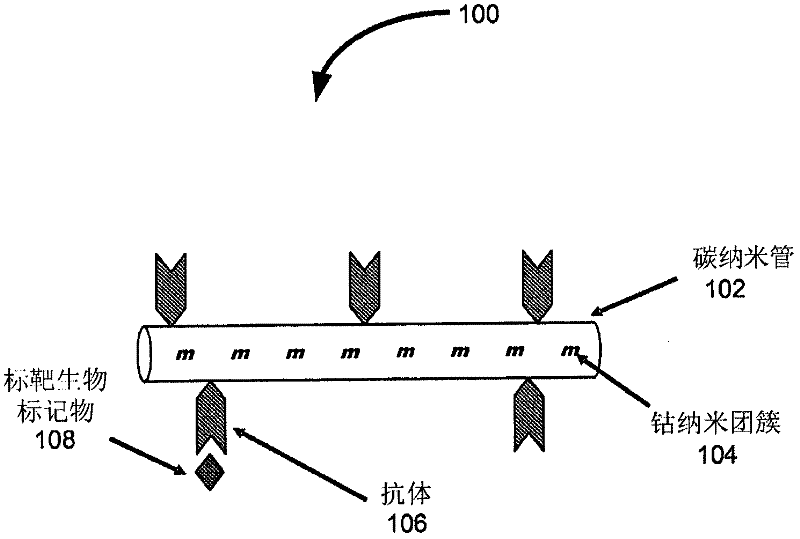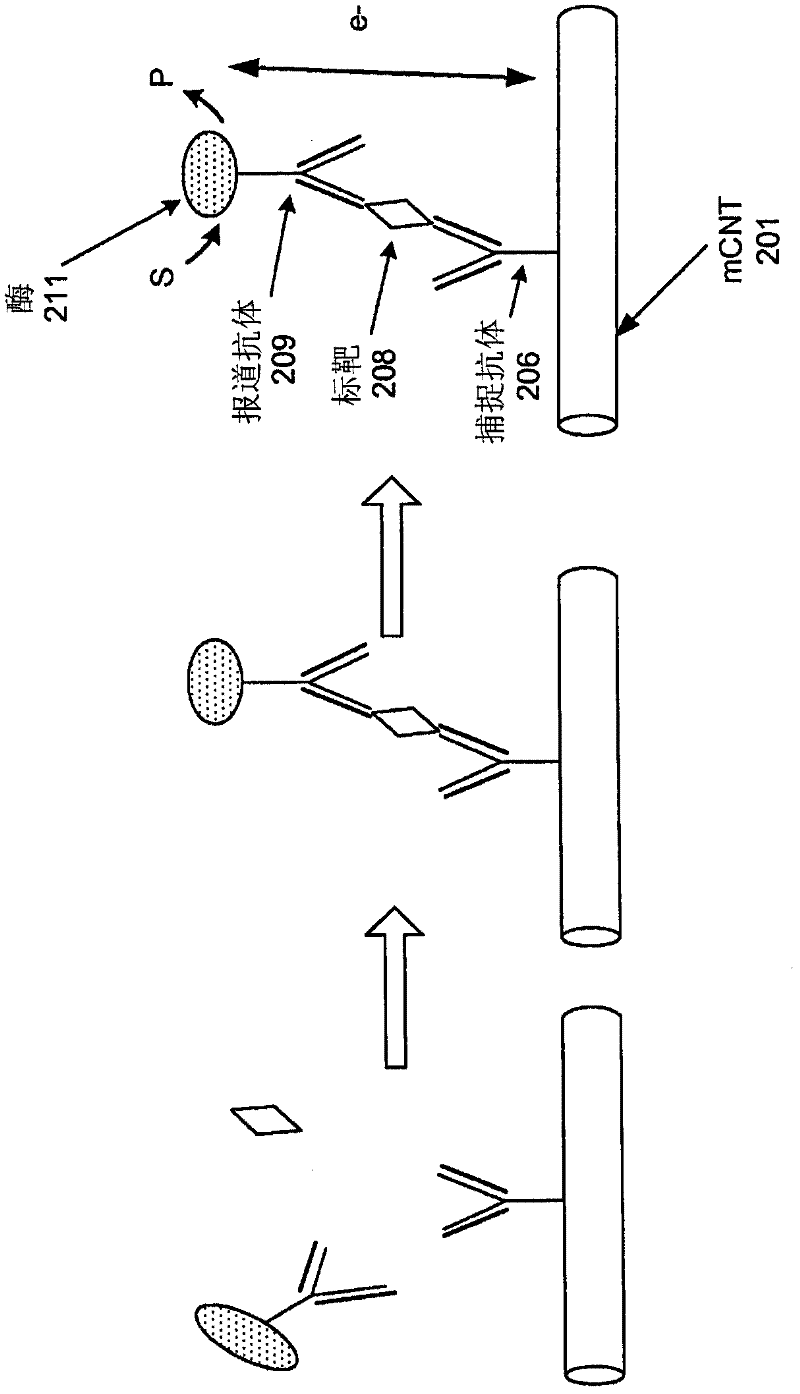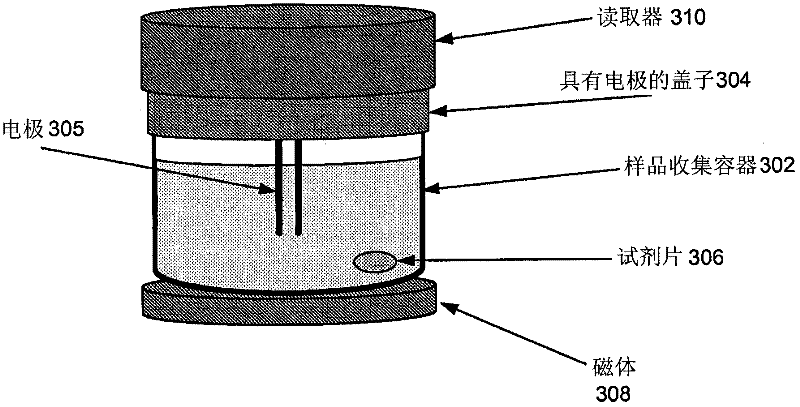Magnetic carbon nanotube based biodetection
A technology of carbon nanotubes and magnetic materials, applied in carbon nanotubes, biological testing, nanotechnology for sensing, etc., can solve problems such as complex surface functionalization
- Summary
- Abstract
- Description
- Claims
- Application Information
AI Technical Summary
Problems solved by technology
Method used
Image
Examples
example
[0057] CNTs were grown in anodized alumina templates by chemical vapor deposition (CVD). The CNT diameter is easily controlled by the template pore size. Electrochemical deposition is then used to form ferromagnetic nanoparticles inside the nanotubes (mCNTs). Study the bulk behavior of thousands of embedded magnetic nanoparticles and their ability to impart strong paramagnetic behavior to CNTs. The results indicate that mCNTs indicate that embedded magnetic nanoclusters are sufficient to provide excellent separation characteristics. Figure 6 is an image of mCNTs isolated from bulk solution using a permanent magnet. The mCNTs were in ultrapure water and were separated from solution using a permanent magnet (marked) placed behind a glass vial. In contrast, non-magnetic CNTs will settle to the bottom of the vial.
PUM
 Login to View More
Login to View More Abstract
Description
Claims
Application Information
 Login to View More
Login to View More - R&D
- Intellectual Property
- Life Sciences
- Materials
- Tech Scout
- Unparalleled Data Quality
- Higher Quality Content
- 60% Fewer Hallucinations
Browse by: Latest US Patents, China's latest patents, Technical Efficacy Thesaurus, Application Domain, Technology Topic, Popular Technical Reports.
© 2025 PatSnap. All rights reserved.Legal|Privacy policy|Modern Slavery Act Transparency Statement|Sitemap|About US| Contact US: help@patsnap.com



